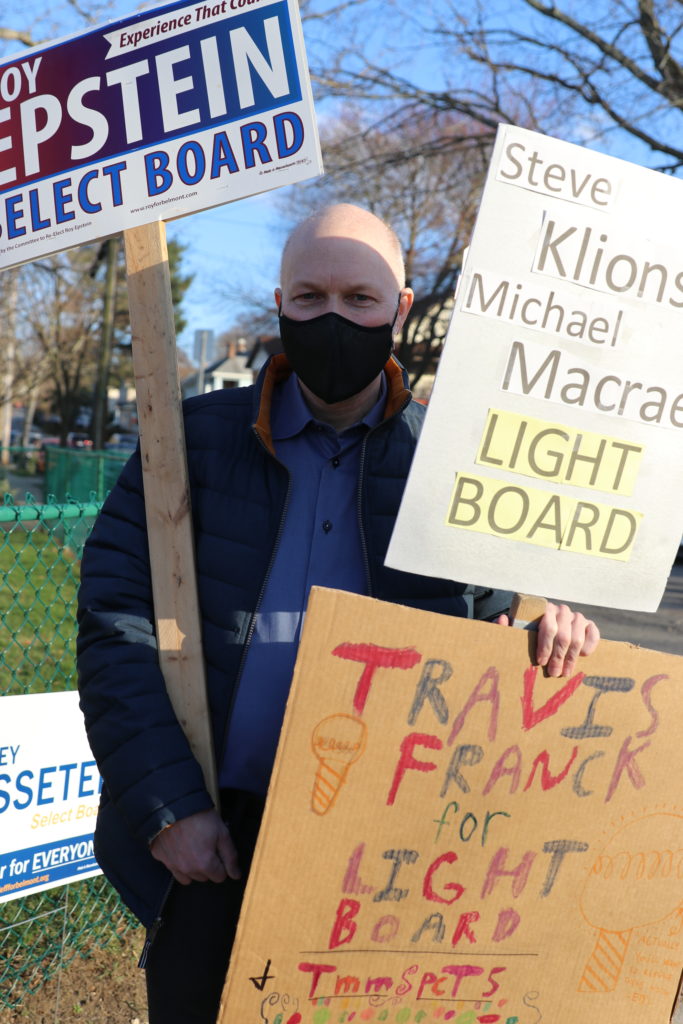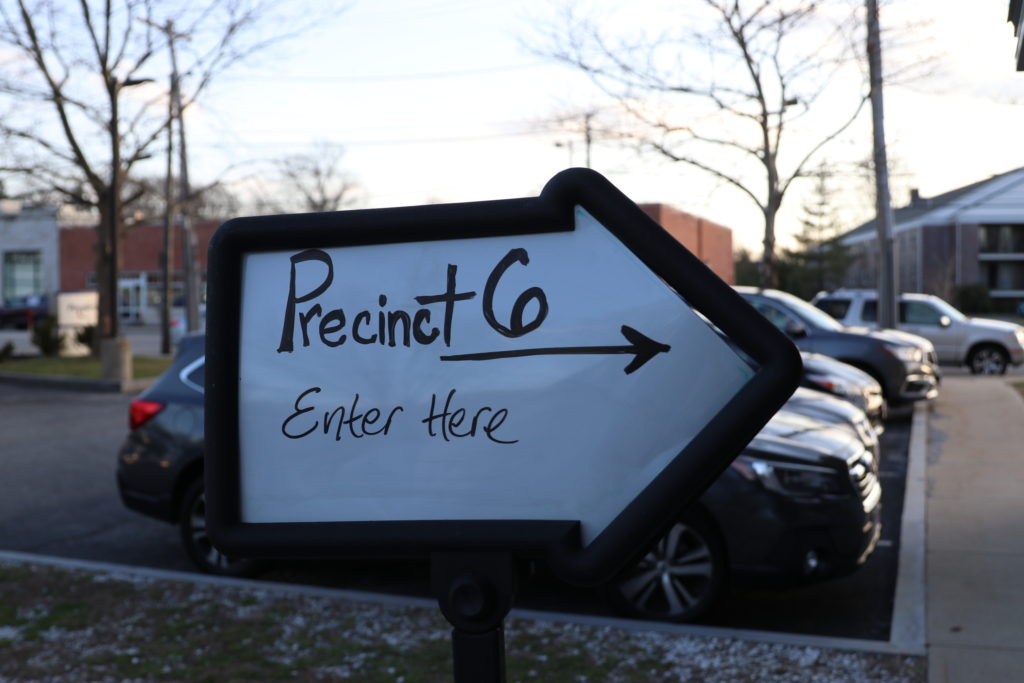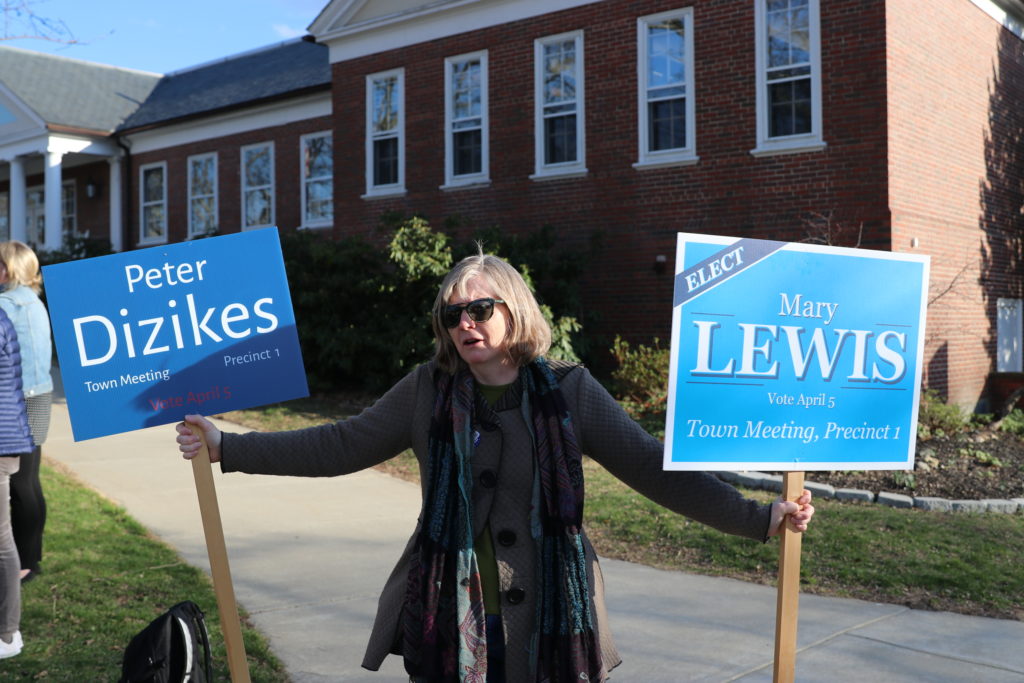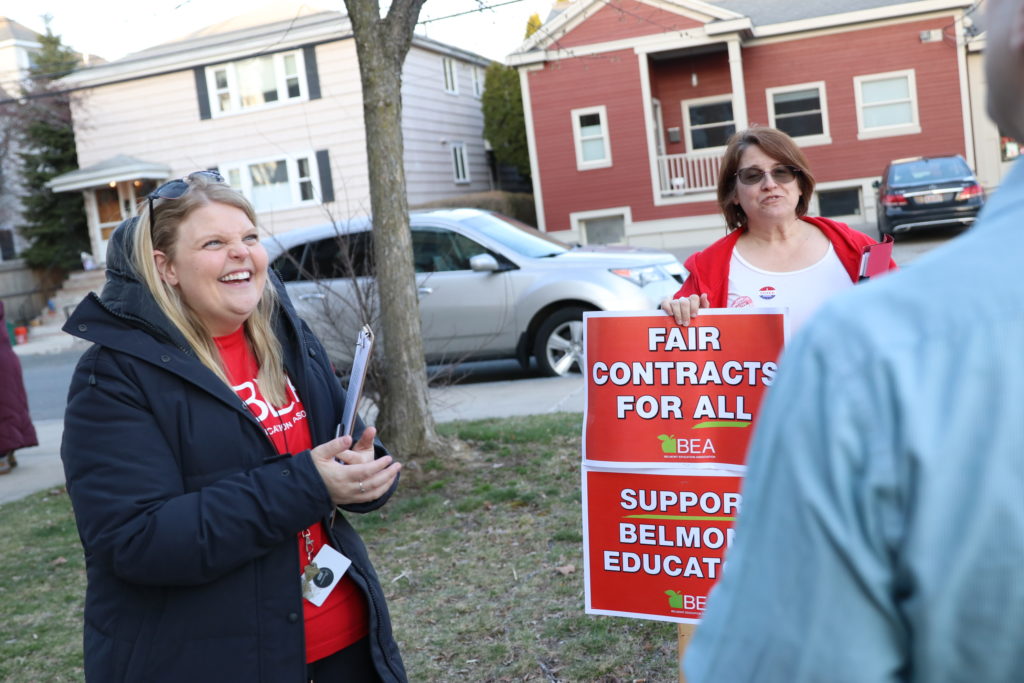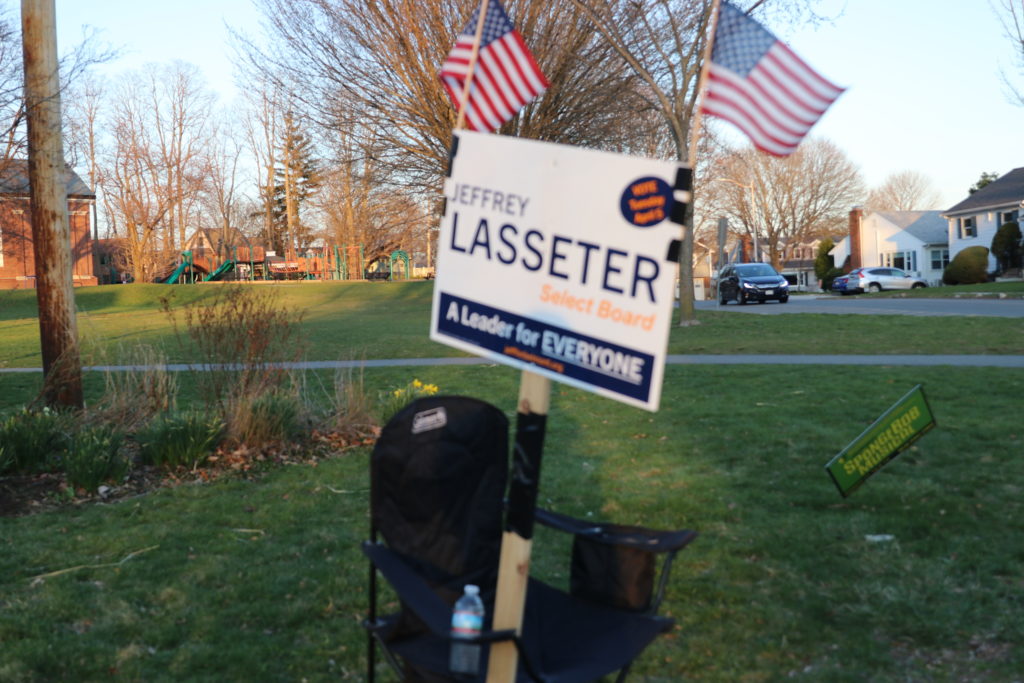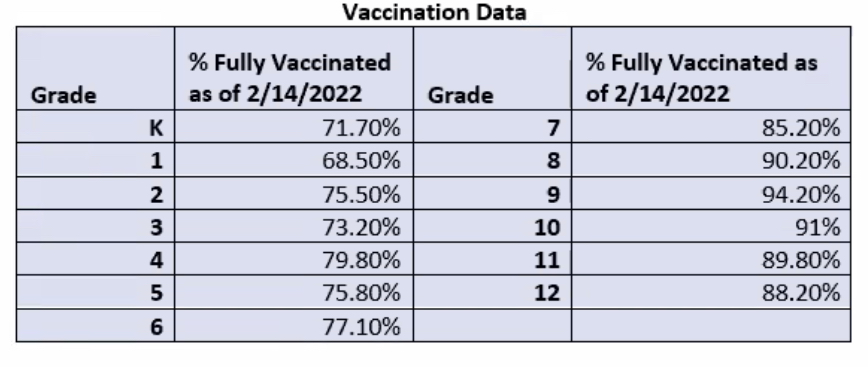Photo: Patrice Garvin at Monday’s Select Board meeting
As the town prepares to move forward with historic changes to its budget process and governmental structure, Belmont’s Chief Administrative Officer received top marks from the elected executive arm of the town during her annual performance review.
Each board member praised Town Administrator Patrice Garvin for her professionalism inside Town Hall and among residents and her fiscal leadership, for which the board gave her its highest marks.
“Her opinion is always valued, her financial insight is always detailed, and her view is always on what is best for Belmont,” wrote Select Board member Adam Dash. “She is a great Town Administrator, and Belmont would be worse off without her.”
Responding to the review, Garvin told the board that she sees it “as a privilege to come and work for the town of Belmont every day.” Noting that she could not do her job with her “amazing” staff and department heads, Garvin said there is “mutual trust and respect for each other, and it goes a long way” when some departments are “really bare bones” in staffing.
“As you know, that can be challenging … but I always keep in the back of my head that what I’m doing is for the residents. It’s not for myself. So I leave my ego at the door, and I keep working.”
According to Human Resources Director Shawna Healey, Garvin’s performance review consisted of self-evaluation and a number-based performance evaluation on all aspects of her role as the town’s chief administrative officer. After calculating the board’s ratings on several categories, including personal characteristics, professionalism, her relationship with the board, and organizational leadership, Garvin received an overall rating of 4.67 out of 5.
Last year, amid Covid-19-related restrictions and budget constraints, Garvin received a 4.16 rating.
If there was one area, the board noted her expertise was in financial management, which each member rated her as a ‘5’ in the category’s six subsets.
“Patrice is an expert financial manager,” wrote Roy Epstein. “The [fiscal year] ’24 budget process will be a critical test of her abilities. Simple and clear communication with the public on these topics is also very important.”
Galvin’s lowest ratings came in the Public Relations/Communications category, with a need to be more effective in transmitting the goals and aims of the town to the public.
Saying that Garvin should remember to emphasize her own professional development, Dash noted while he “appreciates her frank and direct approach, sometimes a softer response would work better.”
The board approved a 2.5 percent merit increase at Monday’s meeting, in line with what the police and fire chiefs recently received as part of their reviews, said Healey. The merit increase is retroactive to July 1, the same date as a 2 percent cost of living adjustment. Garvin’s current annual salary after the two adjustments is $202,156.

